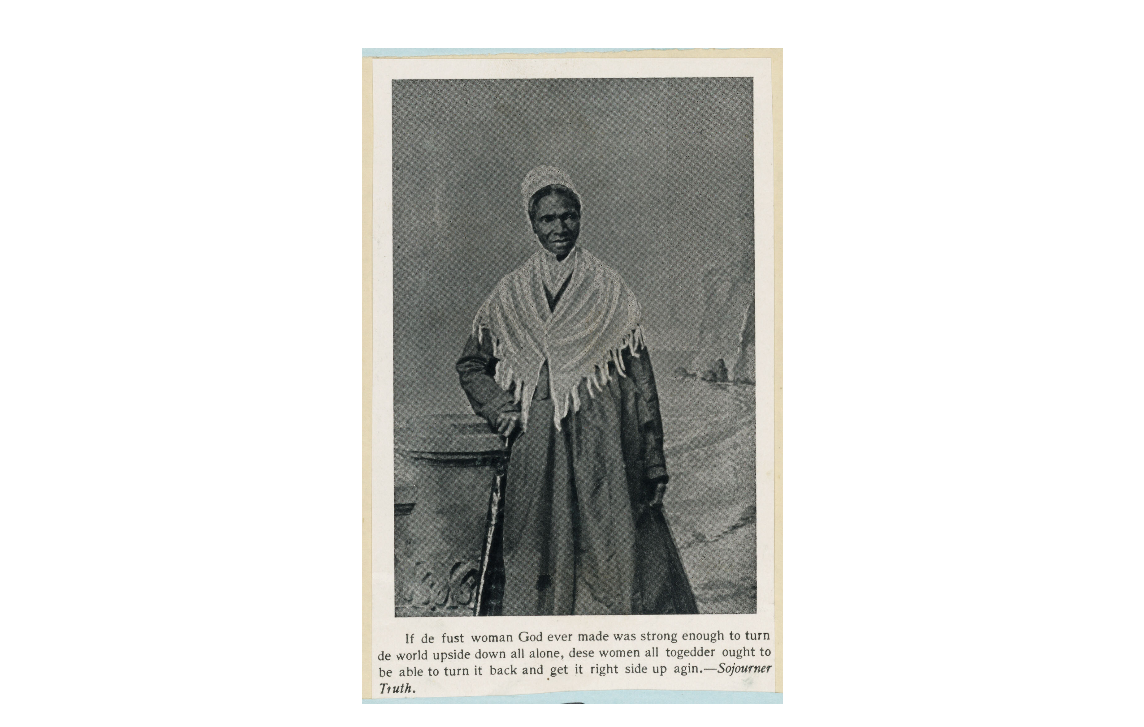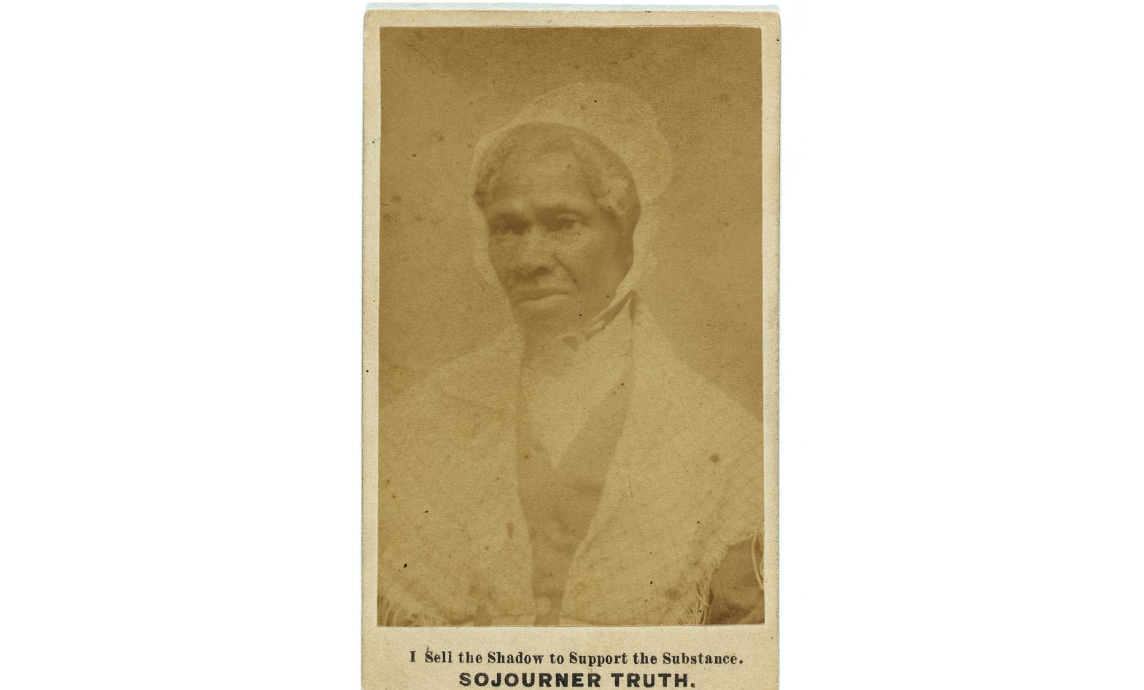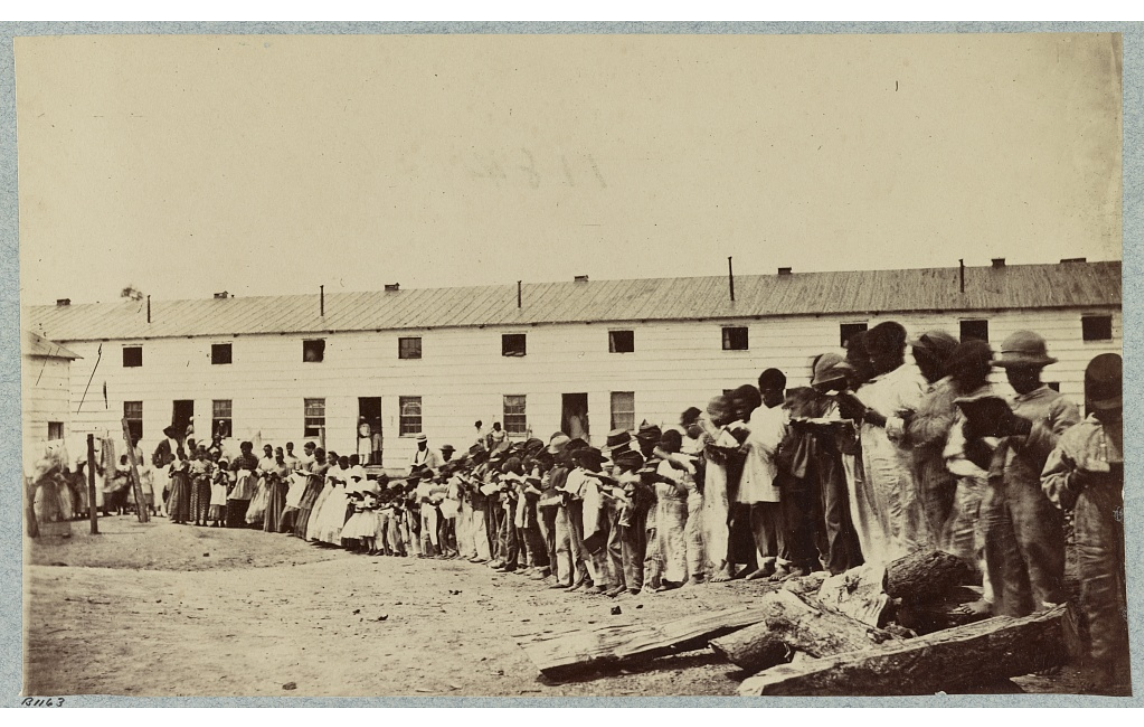November 26, 1883
Celebrate the 100th anniversary of the 19th Amendment with stories about the people and events that led to the passage of women’s suffrage in the United States.
Born into slavery as Isabella Baumfree (sometimes written as Bomfree) in 1797, Truth was enslaved in Dutch-speaking Ulster County, New York, where she was bought and sold four times throughout her life. In 1827, she escaped with her daughter, Sophia after her master failed to uphold the recently-passed New York Anti-Slavery law, and Truth and her daughter were taken in by an abolitionist family who bought their freedom.
Soon after her escape, Truth sued for the freedom of her five-year-old son Peter, who had been sold illegally under the New York law and transported to Alabama. Truth won the case and secured the return of her son, making her among the first black women to successfully sue a white man in court.
Photo of Sojourner Truth. Caption on photo reads: "If de fust woman God ever made was strong enough to turn de world upside down all alone, dese women all togedder ought to be able to turn it back and get it right side up agin." Library of Congress Prints and Photographs Division.
Beginning in 1828, Truth lived in New York City where she joined in the religious revival movement that came to be known as the Second Great Awakening. She became a Christian and worked in a Methodist perfectionist commune which stressed the belief of the equality of all human beings.
Truth renamed herself on June 1, 1843 - the day of Pentecost, which commemorates the Holy Spirit filling Jesus’ disciples - and was christened “Sojourner Truth.”
Working as a traveling preacher, Truth met William Lloyd Garrison and Frederick Douglass, prominent members of the abolitionist movement. She also met suffragists Elizabeth Cady Stanton and Susan B. Anthony over the course of her travels. Later in life, however, Truth distanced herself from the mainstream suffrage movement because activists such as Anthony did not support granting the right to vote to African Americans.
Portrait of Sojourner Truth. Caption on portrait reads: "I sell the shadow to support the substance." Library of Congress Prints and Photographs Division.
Truth rose to national prominence both for her speeches and published works. In 1850, she published her autobiography, “The Narrative of Sojourner Truth,” which reached widespread acclaim and readership. In 1851, Truth embarked on a lecture tour that included a stop at the National Women’s Convention (the second of its kind) in Akron, Ohio, where she delivered what would become the famous “Ain’t I a Woman?” speech.
The speech is best known in its 1863 reproduction by a white abolitionist named Frances Dana Barker Gage, which introduced the line “Ain’t I a Woman?” (originally written as “Ar’n’t I a woman?”). However, this iteration was an extreme reworking of Truth’s original speech, with Gage changing most of Truth’s words and falsely attributing a southern slave dialect. The most authentic version of the speech was published soon after its delivery by Rev. Marius Robinson in the Anti-Slavery Bugle and does not include its famous titular line. From that original 1851 transcript:
“May I say a few words? I want to say a few words about this matter. I am a woman’s rights. I have as much muscle as any man and can do as much work as any man. I have plowed and reaped and husked and chopped and mowed, and can any man do more than that? I have heard much about the sexes being equal; I can carry as much as any man, and can eat as much too, if I can get it. I am as strong as any man that is now. As for intellect, all I can say is, if women have a pint and man a quart - why can’t she have her little pint full? You need not be afraid to give us our rights for fear we will take too much, for we can’t take more than our pint’ll hold.”
Portrait of Sojourner Truth. Caption on portrait says: "I sell the shadow to support the substance." Library of Congress Prints and Photographs Division.
In 1857, Truth moved to Battle Creek, Michigan, where she helped escaped slaves cross to the North via the Underground Railroad. When the Civil War commenced, she worked to recruit African American men to fight in the Union Army and collected money and supplies for the troops. Among those who joined the cause was Truth’s grandson, James Caldwell, who was taken prisoner as a member of the Massachusetts Infantry Regiment and spent years in a few prisoner of war camps.
During the Civil War, she continued to lobby against segregation, and spent time in Washington, D.C. In 1864, following a violent incident she faced on a D.C. streetcar, Truth met with Abraham Lincoln to challenge the segregation of streetcars. She also counseled African American soldiers, taught former slaves domestic skills, and sought out jobs for African Americans who were left homeless and without jobs. In a letter written in February 1864, Truth commented on a visit to freedmen during the war: “It is good to live in it & behold the shackles fall from the manacled limbs. Oh if I were ten years younger I would go down with these soldiers here & be the Mother of the Regiment!”
The photograph shows African-American adults and children reading books in front of their barracks. Library of Congress Prints and Photographs Division
In 1865, Truth accepted a position with the National Relief Association at Freedmen’s Village in Arlington Heights. Situated at the intersection between Columbia Pike and South Joyce Street, this stretch of land was a settlement for former slaves between 1863 and 1900. Here, Truth served as “counselor to the freed people,” and provided support at the Freedmen’s Bureau, where she collected provisions for patients in the Freedmen’s Hospital. Truth also advocated securing land grants from the government to former slaves, though these calls largely went unanswered by Congress.
Truth spent her final years in Michigan. She continued to speak on and advocate for the issues of women’s rights, universal suffrage, and prison reform until her death in 1883.
Learn more in “The Narrative of Sojourner Truth,” available at the Library and online.
2020 marked the centennial of women’s suffrage in the United States.



